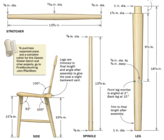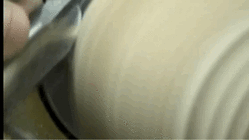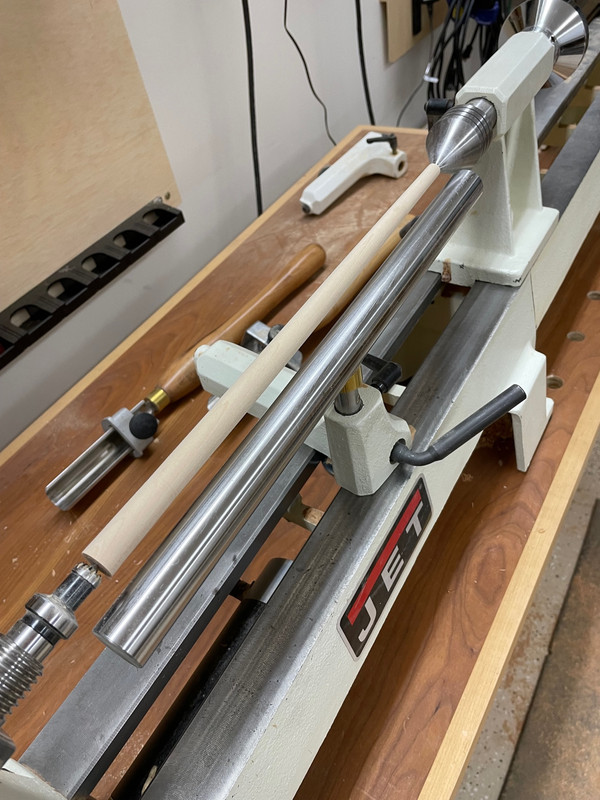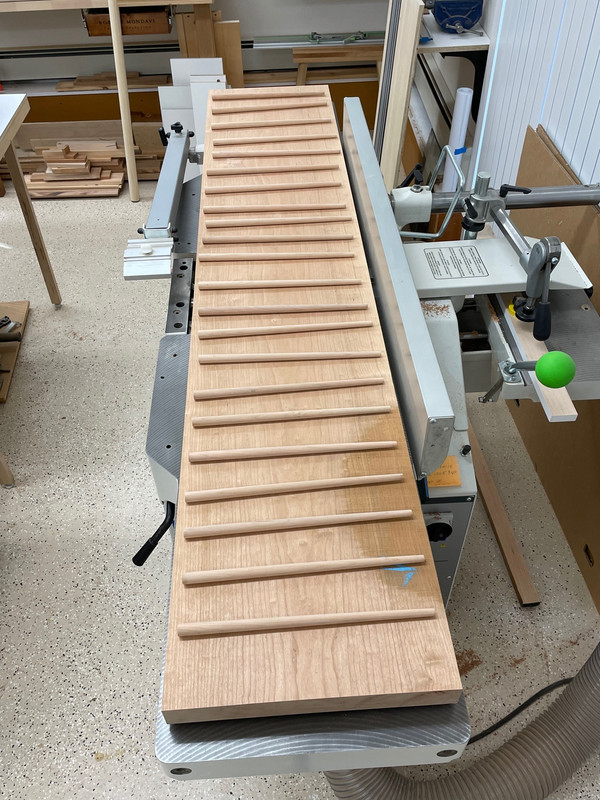If you want to be 'perfect' on spindles, they need to be riven, which means split from a blank of wood, which makes all the grain run true and straight. Not always practical, and you can end up wasting a lot of wood, plus you may have to wait and let it dry. I am trying to remember, but I think the bodgers would make the seat from green wood and the spindles from dry wood so that as the seat 'shrinks' it tightens up around the spindles. No clue as to how well that works. I have also heard of final shaping of the tenon that goes into the seat by sticking them in a heated can of sand to let them dry out a little extra before final sizing. For skew chisel, I would use a 1 inch wide one. You can get bigger, but I have not found the bigger ones to perform any better, and they were a bit easier for me to use. Thompson or D Way are my preferences. Do check out Woodturner 21 on You Tube. Steve Jones, I think. He is a production spindle turner and what he does is amazing to say the least. He does use a steady rest that has some felt on it for longer spindles. Some famous spindle turner did make the comment that 'the bevel should rub the wood, but the wood should not know it'. That is perhaps the most difficult thing to learn in turning for both bowls and spindles. Some times I will prefer a peeling type cut, which depending on the wood, can leave a very clean surface. Once I did turn a 3 foot long by 1 1/2 diameter rolling pin for pasta, and I used 80 grit on some plywood to make sure it was perfectly straight. It still is after a couple of years, mostly because I turned it down in maybe 6 stages over 6 months to allow the wood to 'adjust'.
robo hippy






